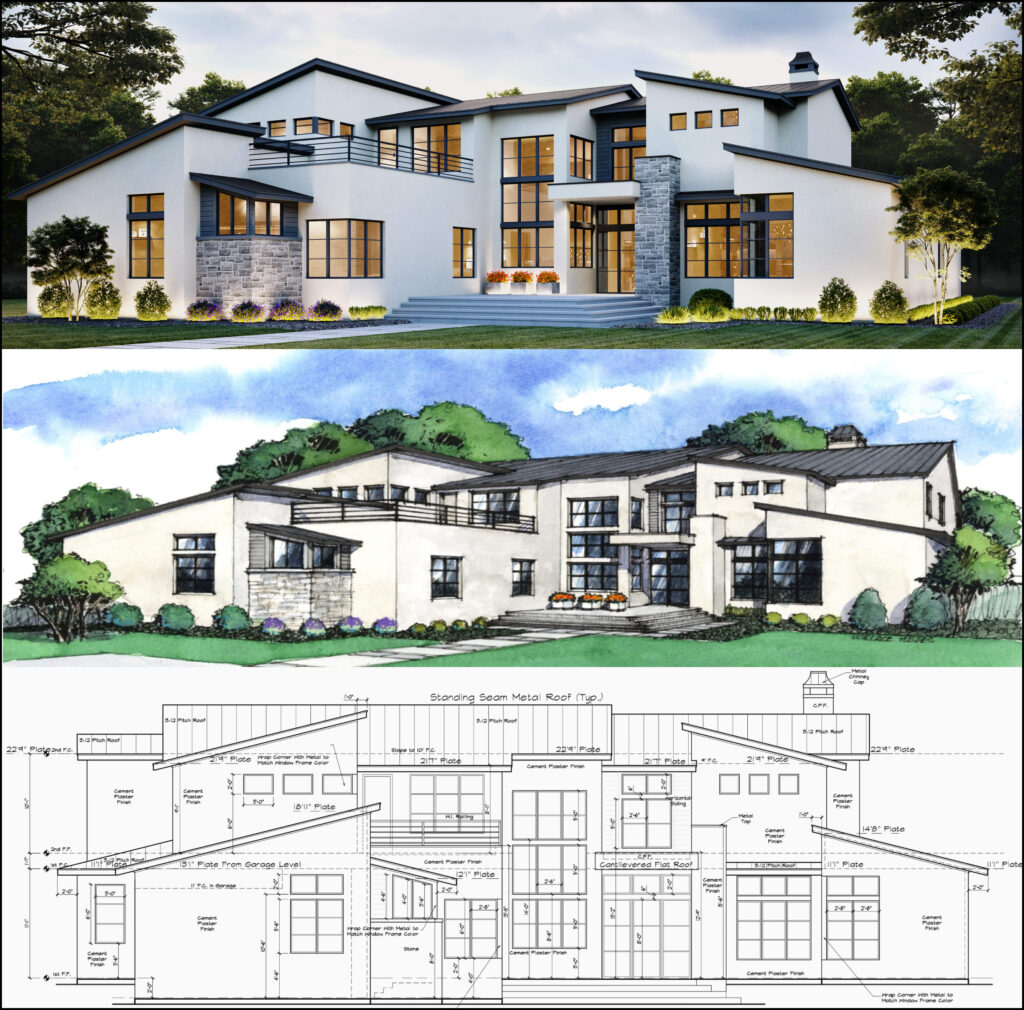Explore Acclaimed Tasks by Popular CDA Architects
Explore Acclaimed Tasks by Popular CDA Architects
Blog Article
The Vital Duty of an Engineer fit Sustainable Urban Settings for Future Generations
The duty of a designer in crafting sustainable urban settings is significantly essential in responding to the obstacles of climate change and urbanization. By seamlessly integrating environmental principles right into their styles, architects not just boost the aesthetic and practical top quality of metropolitan spaces however likewise address pushing concerns such as energy performance and social equity.
Recognizing Sustainable Urban Design
Sustainable urban layout integrates environmental principles with metropolitan preparation to produce atmospheres that are not only livable yet additionally durable. This technique emphasizes the relevance of including all-natural systems right into the urban fabric, making certain that development meets the demands of the here and now without compromising the ability of future generations to satisfy their very own needs. Key elements of sustainable urban layout consist of effective land usage, the promo of biodiversity, and the integration of green rooms, every one of which add to boosted top quality of life for residents.
Furthermore, sustainable city layout focuses on the reduction of the city warm island impact, improved air quality, and efficient stormwater monitoring. It urges the use of renewable energies and energy-efficient building techniques, which substantially lower carbon impacts. Moreover, sustainable metropolitan design cultivates social equity by producing easily accessible public spaces and promoting mixed-use growths that accommodate varied populaces.
Through thoughtful planning and innovative style strategies, sustainable metropolitan environments can boost neighborhood durability against environment change while promoting economic advancement. This holistic strategy not only addresses instant urban difficulties yet also prepares for much healthier, a lot more sustainable cities for generations to find.
Key Responsibilities of Designers
Architects play an essential duty fit sustainable urban environments by converting layout concepts into substantial frameworks and areas. Their obligations encompass a wide array of tasks that add to the overall success of city layout projects.
First and foremost, engineers conduct comprehensive website analyses to understand the environmental, social, and social context of their jobs. This foundational knowledge educates their layout decisions, guaranteeing that structures balance with their surroundings. They also involve in collective procedures with stakeholders, consisting of city coordinators, designers, and the area, promoting an inclusive method to urban advancement.
In addition, designers are charged with creating designs that optimize energy efficiency, source preservation, and performance. They must stick to regional zoning laws, building codes, and sustainability certifications, making sure conformity while pressing the limits of innovation.
Moreover, designers are responsible for taking care of the design procedure, coordinating with different specialists throughout the building and construction phase to make certain that the vision is recognized accurately (cda architects). Inevitably, their function is not only regarding aesthetic appeals; it is concerning creating resilient, adaptive spaces that boost the lifestyle for existing and future generations, laying the foundation for lasting metropolitan living
Innovative Products and Techniques

Furthermore, innovations in review innovation have actually led to the development of high-performance products, such as protected concrete kinds (ICFs) and photovoltaic or pv glass, which add to energy conservation and harness renewable resource. Methods such as passive solar layout and environment-friendly roofing systems further exhibit just how architecture can balance with all-natural systems, lowering reliance on artificial cooling and heating.
Additionally, the combination of wise materials, which adjust to ecological modifications, offers encouraging methods for enhancing structure efficiency. These products can reply to temperature level variations or wetness degrees, enhancing comfort and sustainability.
Inevitably, the strategic selection and application of ingenious products and techniques equip designers to produce city areas that are not only practical and cosmetically pleasing however also durable and environmentally responsible, read guaranteeing a lasting future for generations to find. cda architects.
Area Interaction and Cooperation
The success of ingenious products and strategies in lasting urban architecture is substantially boosted by energetic community involvement and partnership. Architects must recognize that the constructed setting exceptionally affects the lives of regional homeowners, making it necessary to entail them in the style procedure. Involving the community fosters a feeling of possession and liability, ensuring that developments not just fulfill visual and useful needs yet likewise reflect the worths and desires of those who inhabit them.

Successful area interaction likewise helps in prioritizing social equity within metropolitan development. By thinking about the voices of marginalized populations, architects can produce areas that are comprehensive and fair. This way, neighborhood involvement and partnership come to be important to attaining truly this post sustainable urban atmospheres that offer the demands of current and future generations.
Future Fads in Lasting Style
An emerging concentrate on adaptive reuse and circular economic climate principles is established to redefine the landscape of lasting architecture. As cities grapple with enhancing populace thickness and ecological obstacles, engineers are progressively turning to strategies that optimize existing frameworks as opposed to pursuing brand-new builds. This method not just preserves cultural heritage but also substantially minimizes source usage and waste.
Additionally, improvements in technology are forming future trends in lasting style. The integration of wise products and building systems permits real-time energy management, improving effectiveness and minimizing carbon impacts. Innovations such as eco-friendly roofings, living walls, and energy-generating exteriors are ending up being basic methods, further advertising ecological equilibrium within urban settings.
In addition, a change in the direction of biophilic layout is gaining grip, stressing the link between nature and human health. By including all-natural elements, architects create areas that promote mental health while advertising biodiversity.
Conclusion
To conclude, architects are critical beforehand lasting urban atmospheres with their competence in style, ingenious materials, and community engagement. By prioritizing energy performance and source conservation, these specialists add to the production of resistant metropolitan spaces that satisfy the requirements of present and future generations. The assimilation of eco-friendly concepts not just boosts livability yet also promotes social equity, making sure developments reverberate with the values and aspirations of the areas they serve.
Report this page